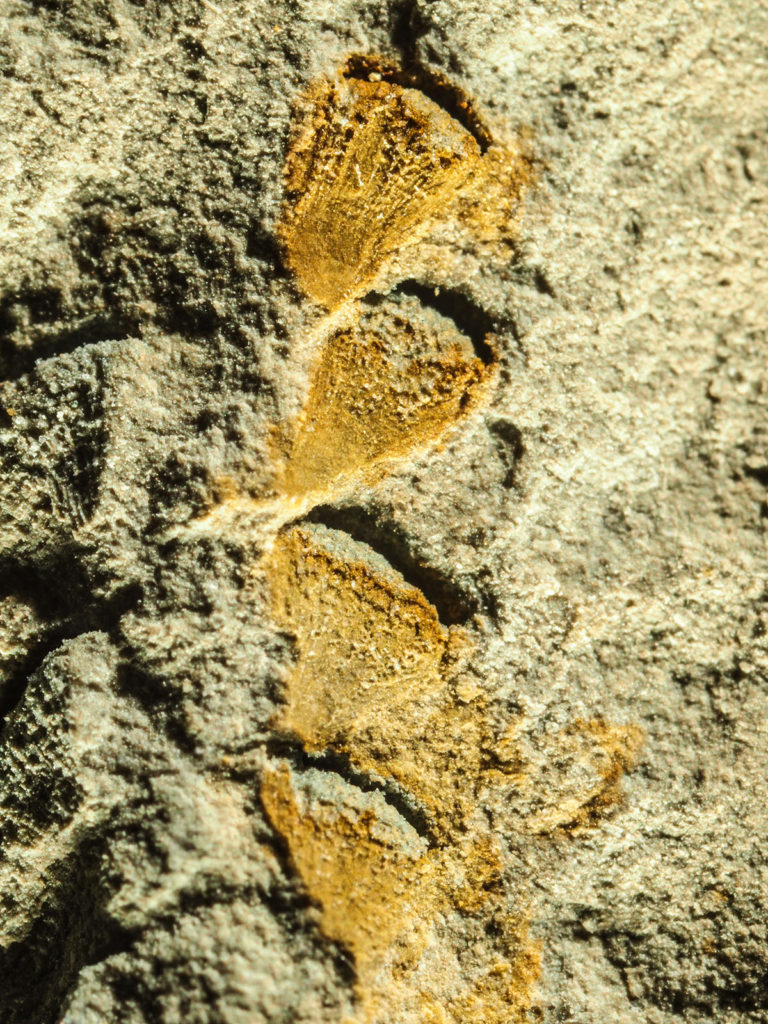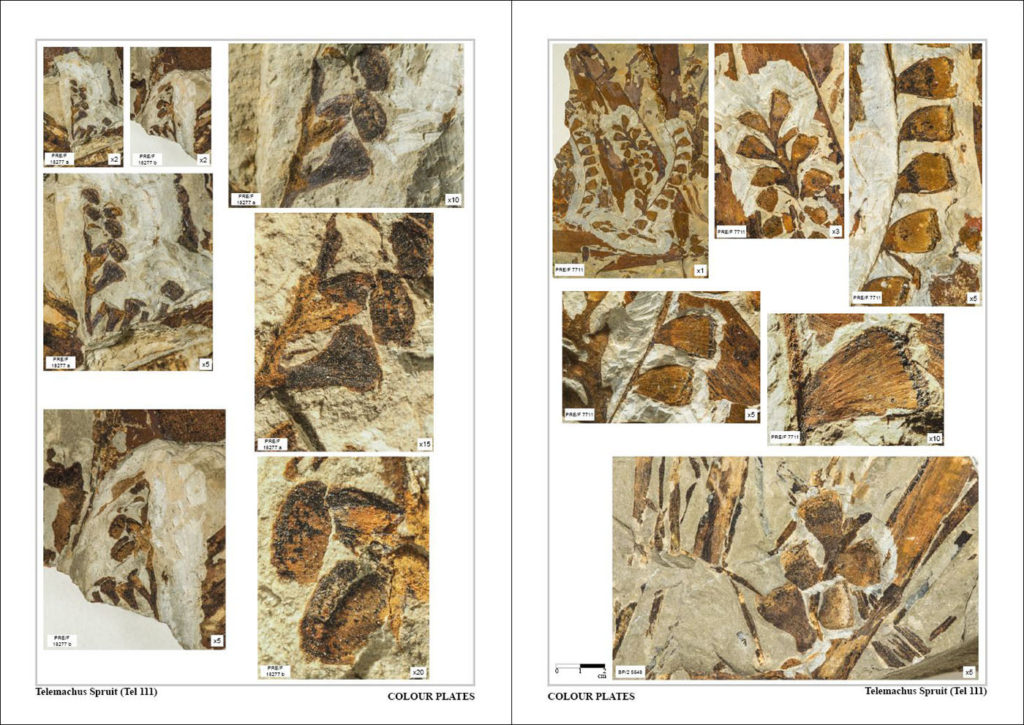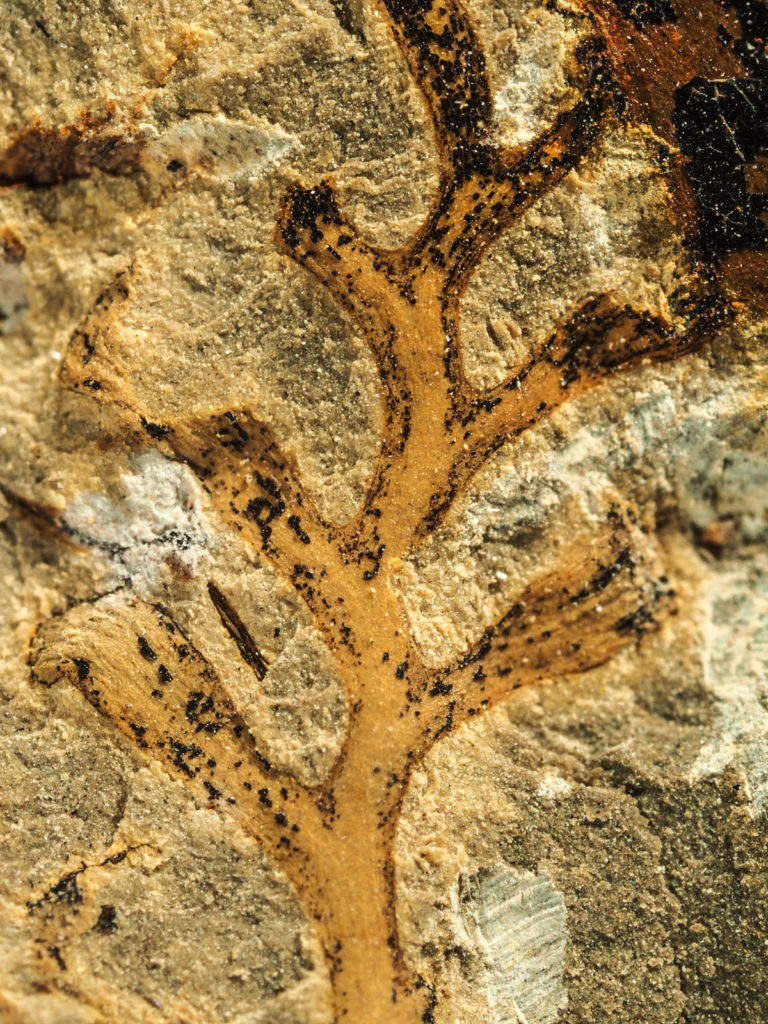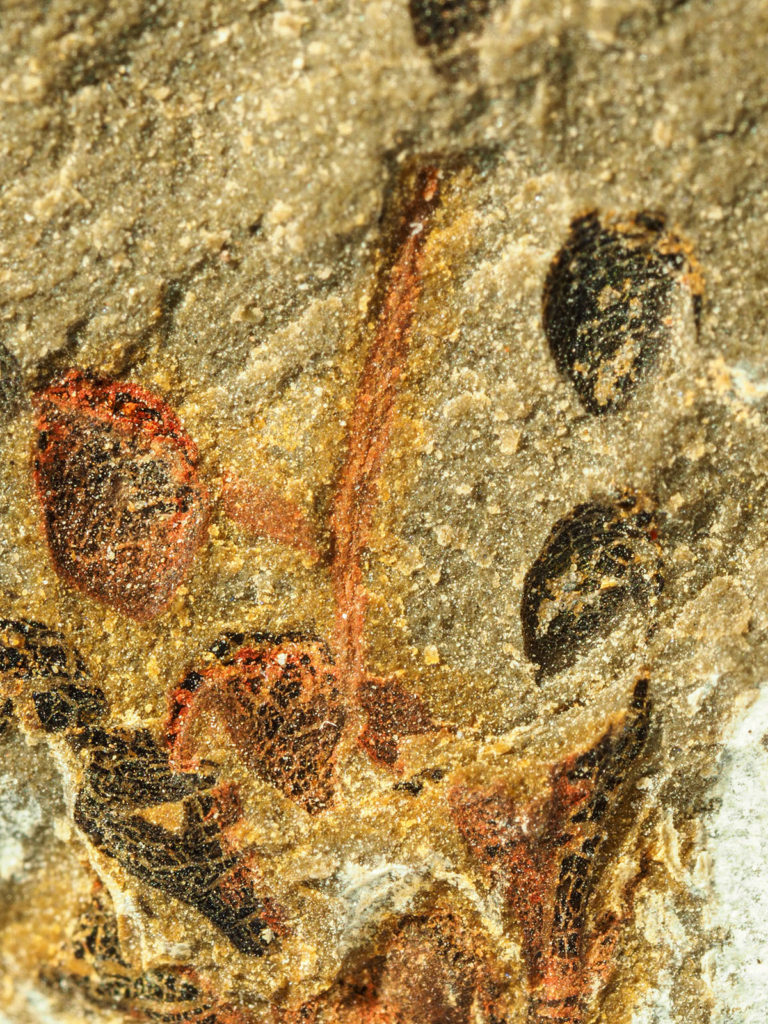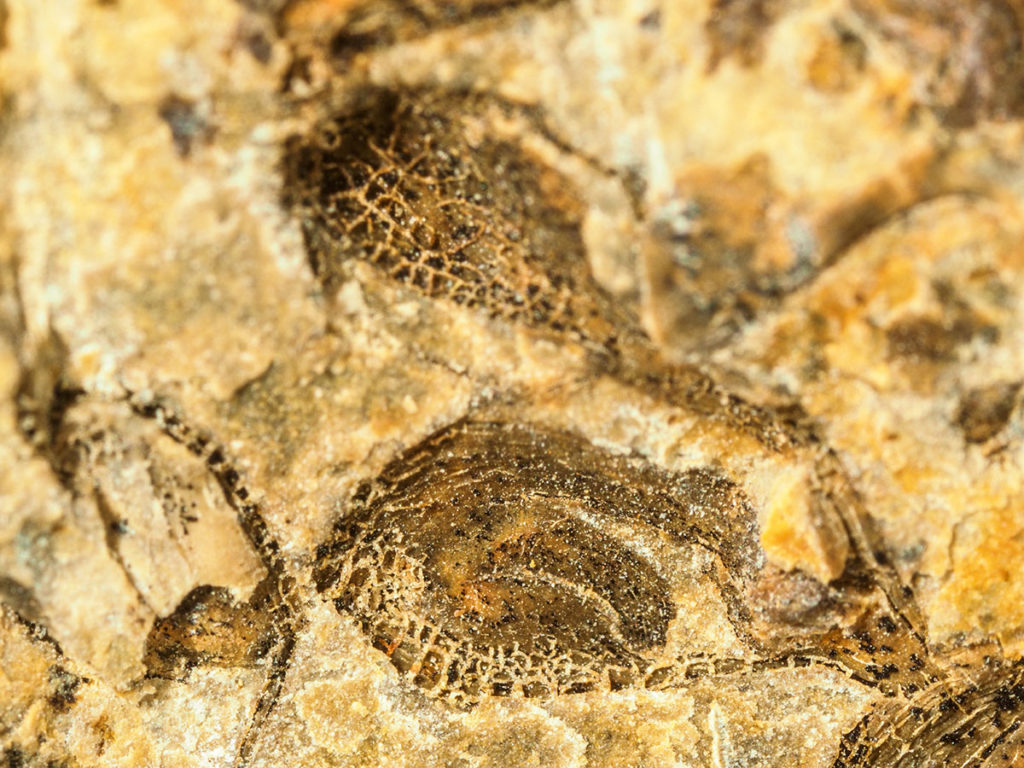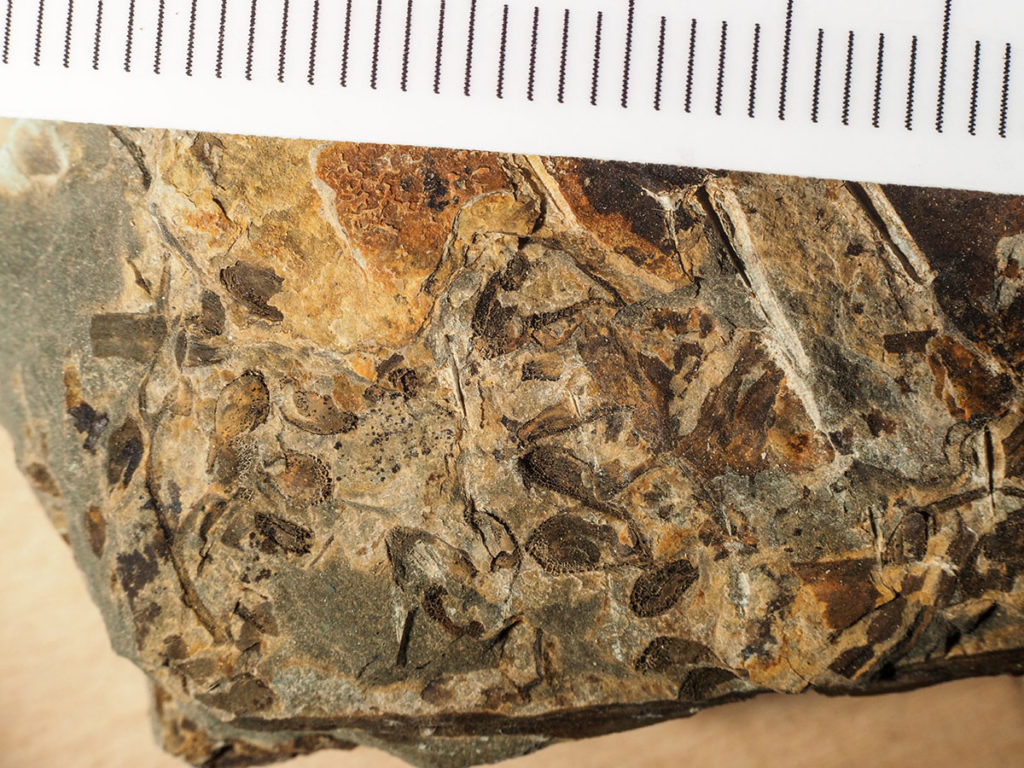What do you do when you must travel abroad and bring along everything but the kitchen sink? The best solution is to opt for lighter and smaller photographic equipment. A few years back I already made the move from full frame cameras to Micro 4/3 equipment. Since I shoot mostly for magazines and books, I have no need of huge megapixel counts as my work is always reproduced to a small size. Working with plenty of light, I also do not require a camera that can push its ISO in the tens of thousands.
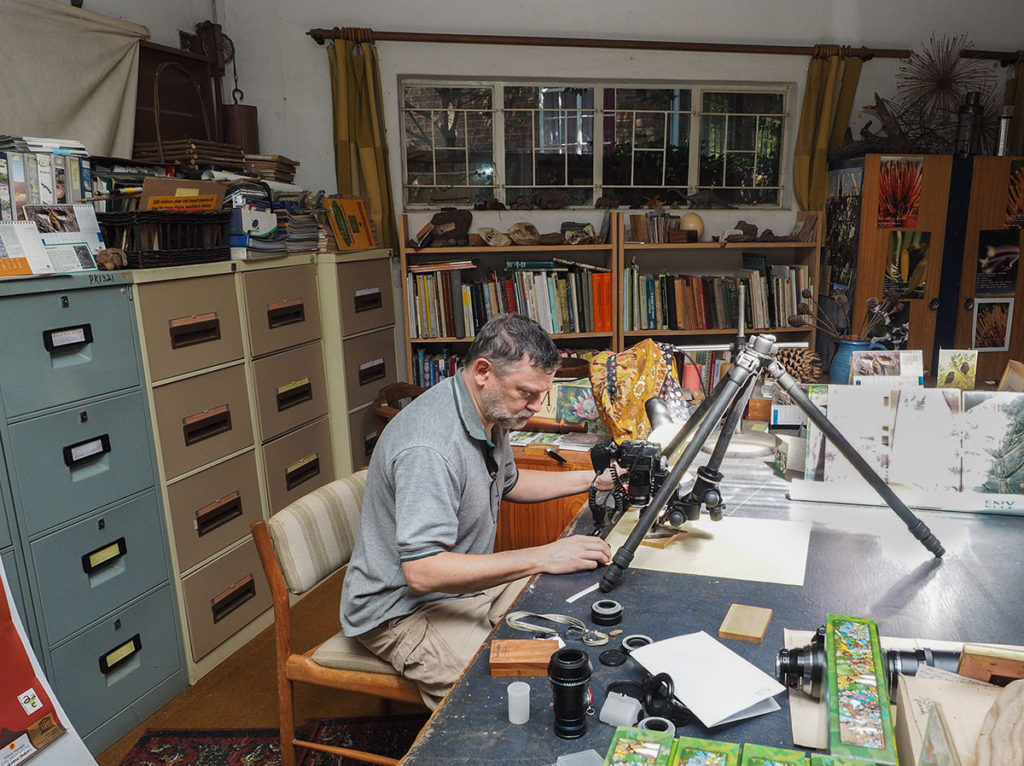
The author hard at work. The Laowa 25mm is seen in the foreground, with an adapter to to mount it on my Olympus.
I just came back from a third trip to South Africa for the specific purpose of working on a scientific book on the plant fossils of the Molteno formation. The photography ranged from large wildlife during a safari outing, to details of fossils not bigger than a millimeter or two. In past trips, I had to bring along a large bellows on which were mounted full format lenses. But this time, I had an ace up my sleeve: the Laowa 25mm Ultra Macro. It can be mounted on my full frame camera when shooting back home, or on the micro 4/3 with the proper adapter. But in no way is it a compromise: in spite of its diminutive size, this lens is extremely sharp and it gives me as much magnification as a 100mm macro on a fully extended bellows.
Like all Laowa lenses, this one is solidly built and entirely manual, which is not a problem for a macro lens. The only drawback I can think of is the lack of information in the exif, which I must manually enter in Lightroom.
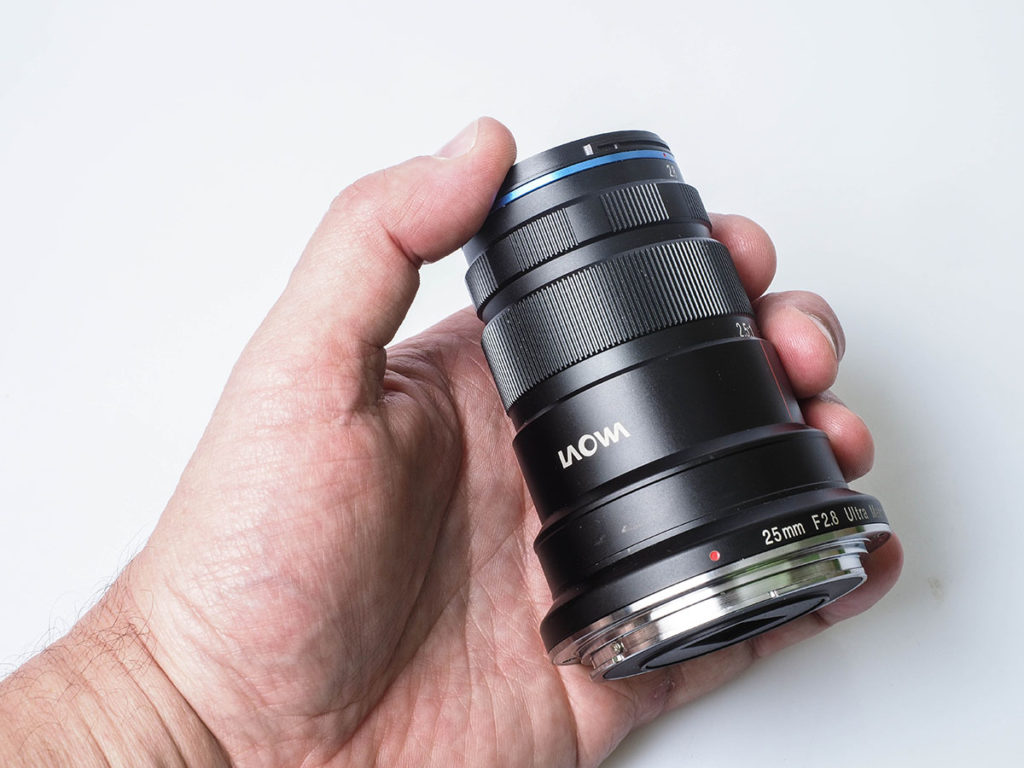
Don’t be fooled by its size, this lens packs quite a punch!
Back in Africa, I have access to a large working space with a solid table. A carbon tripod with its head mounted upside down replaces the reproduction stand that I would use back home. A macro twin flash supplies the light. Considering the magnifications that this lens can provide, a focusing rail is a must; I use a small manual one that is more than adequate for the job. Even while shooting with the lens pointing down, the focus always stays exactly where it is set; I never saw any hint of the dreaded lens creep that plague so many lenses.
The fossils that I photograph were found during a span of 40 years of research by my host, Dr. John Anderson. They are normally housed at Witwatersrand University, Johannesburg. On my previous visit, we made three trips to bring back the fossils needed for the second of four books we are doing together. The first one, Molteno Sphenophytes: Late Triassic Biodiversity in South Africa, received rave reviews from its editor and the paleontological community. From the early drafts, our current project will be even bigger and more impressive, with more than 100 colour plates. Those plates are where I come in.
The family of plants we work on is called Kannaskoppia. A good portion of the specimens I have to photograph are leaves that are usually large enough to be shot with a regular macro lens. The problem is with the fruiting bodies, which tend to be minute and need greater magnification to reveal details required for identification. Some are so small I can barely find them on the stone! To bring out details and a usable picture is then a matter of good lighting and a sharp lens. Precise focusing at these magnifications is always difficult and a table lamp is used to increase the ambient light. Using a micro 4/3 camera provides other advantages over a traditional DSLR. Focus peaking makes it very easy to precisely focus on the subject. Also, since the sensor is smaller than full frame, the apparent magnification is also multiplied by two: at 5x the image appears twice as big as when shot with a full frame.
Overall, Laowa’s 25mm f/2.8 2.5-5x Ultra Macro performed flawlessly. While extreme magnification normally requires the diaphragm to be opened up to avoid image degradation due to diffraction, the Laowa is designed in such a way that diffraction is greatly reduced. When more depth of field was needed, the lens was stopped down to f/8 or f/11 with no ill effect. Images were sharp with excellent colour rendition.
Laowa had lent me the lens to test and evaluate it in PHOTONews. After a few months, I received an email: the lens was needed for an upcoming show… I told them to forget it and send me a bill instead. There is no way I am going to part with it!
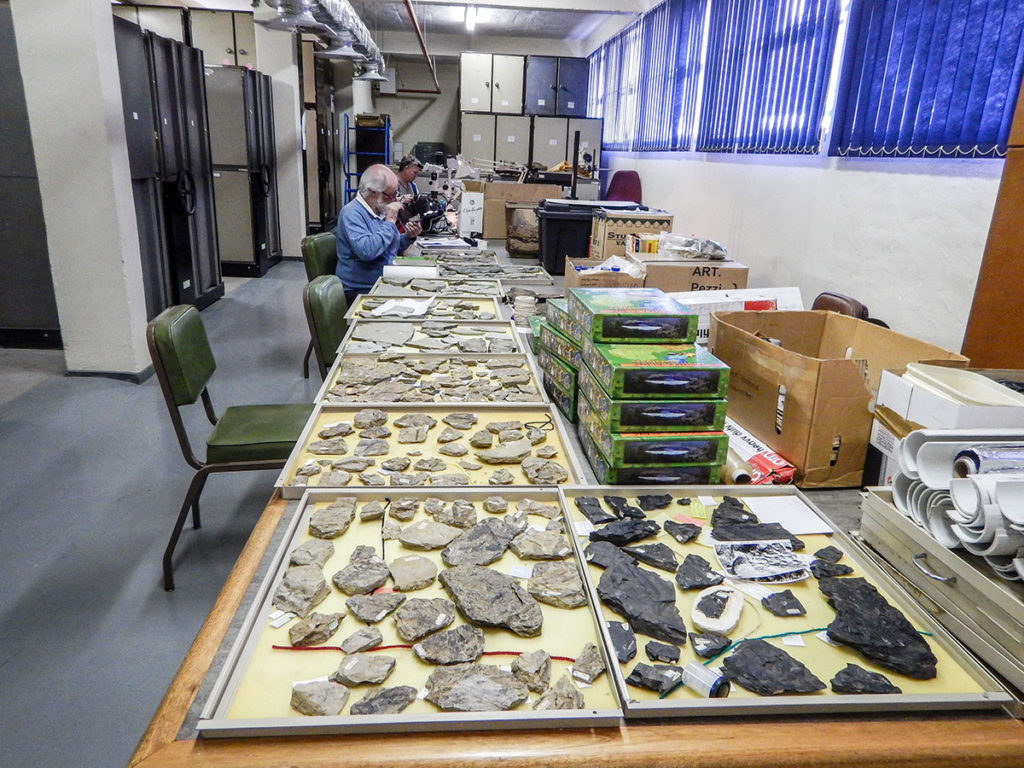
My host and friend in South Africa, Dr John Anderson, is selecting fossils that will be photographed. What you see here is what I had to shoot in one week… There were three such trips to the Witwatersrand University…
An example of two color plates from the upcoming book. There are 108 of those.
All other pictures are examples of those fossils at various magnifications. Two of those show a ruler (in millimeters and centimeter) that is used to establish the actual size in the final edited plates.
About the Author
Christian Autotte describes himself as a semi-professional photographer for over 35 years with interests in macro and micro photography of insects, fossils, minerals, plants, and always fascinating, the exploration of the microscopic world.
Published in North America and Europe, his photos are available to publishers and individual buyers. You can contact Christian by email at: cautotte.9001@videotron.ca.



